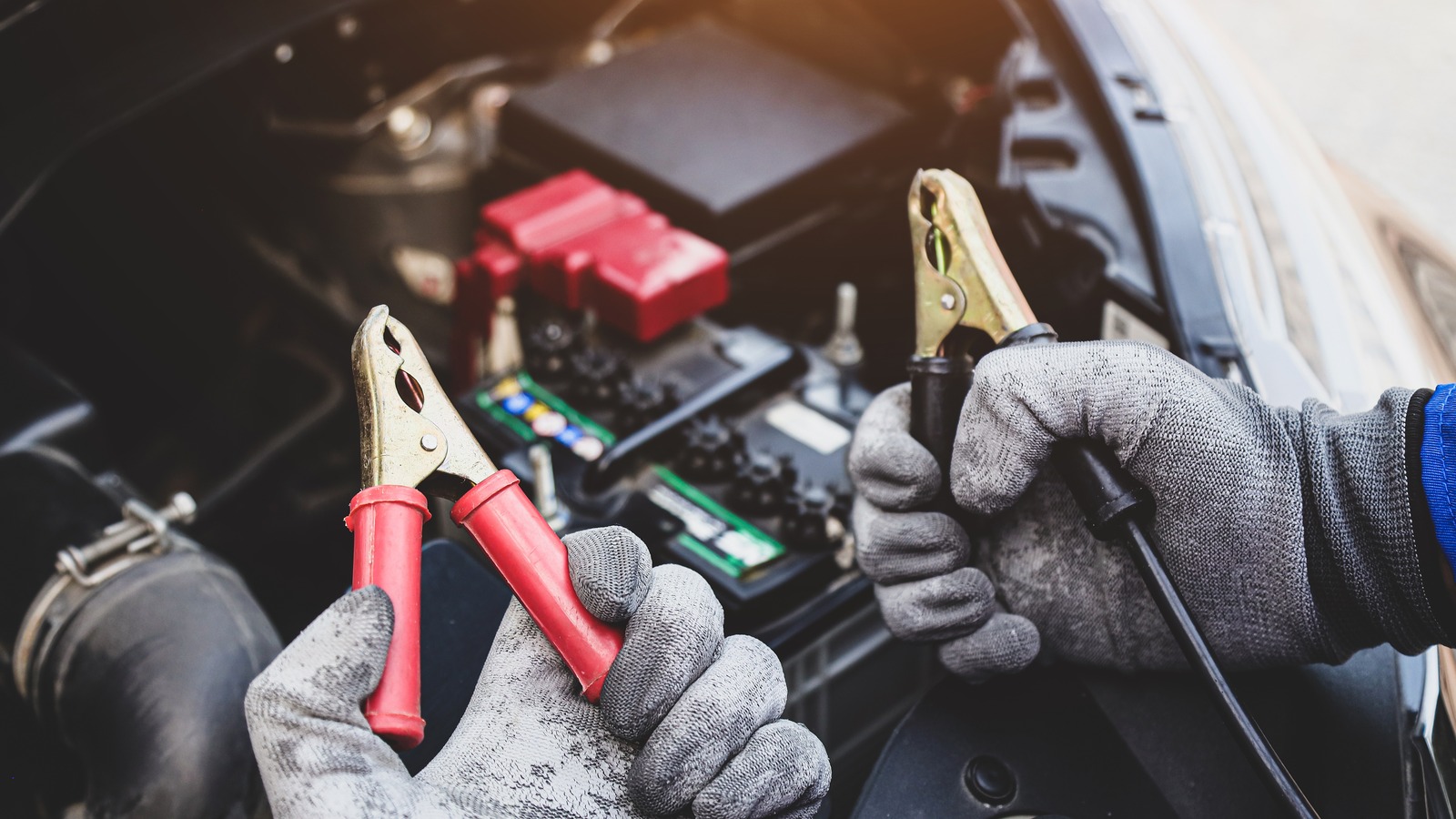When your car’s battery dies unexpectedly, jumper cables can be a lifesaver. They are easy to use, reasonably priced, and should ideally be kept in the trunk of every car. However, occasionally, what begins as a brief battery boost degenerates into a concerning scene, complete with smoke, melting plastic, or even a burning odor.
If that has ever happened to you, it’s not just bad luck; it’s a blatant indication that something is amiss. Typically, smoking or melting jumper cables indicates bad connections, incorrect cable size, or overheating from excessive use. Knowing what’s going on and how to fix it keeps you safe from electrical hazards in addition to protecting your vehicle.
Are the wrong connections to be blamed?
Connecting the cables incorrectly is one of the most frequent and hazardous errors people make when jump-starting a car. The positive terminal should always be clamped with the red clamp, and the negative terminal with the black clamp. Serious short-circuiting may result from these connections being loosely attached or inverted, which alters the electrical flow. This error can cause the cables to melt or smoke almost immediately due to the heat that accumulates. Even worse, a battery explosion may result from such a mistake. It’s interesting to note that jumper cables are frequently made to melt first as a safety precaution to stop the battery from blowing up, which is unpleasant but much safer.
The cables may still cause issues if they are connected in the incorrect order, even if they are connected to the correct terminals. Sparking and overheating may result, for instance, from touching the ends together or connecting the two negative clamps before the positives. Taking your time, checking each clamp twice, and making sure the connections are secure before turning on the ignition are the best ways to avoid this problem. When this process is rushed, it frequently results in expensive damage or risky circumstances that could have been prevented.
Are the cables thinner than normal?
Cheap, thin jumper cables can quickly cause issues because they are not all created equal. A gauge rating is included with every set of cables, indicating the wires’ thickness. The cables will be thicker and stronger if the gauge number is lower. Because they are unable to safely handle the amount of current flowing through them, cables that are too thin for the kind of vehicle like Toyota Land Cruiser pickup you are jump-starting, may overheat. Rapid accumulation of that heat causes the insulation to become softer and ultimately melt the plastic covering.
Heavy-duty cables are a great investment, particularly if you drive a truck, SUV, or other vehicle with a big engine.
Electricity can flow more effectively with thicker cables without producing hazardous heat. It’s tempting to grab the cheapest option from a roadside store, but spending a little more for better quality is worth it. In an emergency, you want cables that can handle the job without putting your vehicle—or you—at risk.
Are connection points wrongly joined?
In certain cases, the connection points—rather than the cables—are the issue. The flow of electricity between the batteries may be hampered by dirt accumulation, loose clamps, or corrosion on the battery terminals. Additional resistance is created when the current must “fight” through a bad connection, and that resistance produces heat. Eventually, the insulation melts or the cable ends smoke as a result of that heat. Due to improper power delivery to the dead battery, it may also make it more difficult to jump-start the vehicle.
It’s wise to inspect both batteries for corrosion or accumulation before attempting to jump your car. Clean the area around the posts gently if there is any green or white residue before securing the cables. A tight, clean, and firm connection lowers the possibility of overheating and guarantees smooth current flow. Recall that secure electrical contact—not merely “touching”—is necessary. You can avoid melted cables or even a fire by taking a few seconds to inspect.
Are the cables worn out or not secure?
Not even the strongest jumper cables are indestructible. The insulation may deteriorate or the clamps may corrode over time due to exposure to moisture, dirt, or incorrect storage. When that protective layer is broken, the exposed wires are vulnerable to metal surfaces and air, which can quickly result in short circuits. The wires quickly heat up as a result, producing smoke or even melted plastic that smells strongly of burning.
Replace your cables right away if you notice any fraying, cracks, or corrosion. Using damaged cables can cause more harm than good, possibly causing you to get hurt or frying electrical components. The cost to keep a new, high-quality set in your car is minimal. In addition to extending their lifespan, keeping them out of direct sunlight and away from engine heat guarantees that they will function correctly when you need them.
Is your car engine cranking for too long?
Long-term cranking is another cause of jumper cables overheating or smoking. Some people get frustrated and keep turning the ignition when their car doesn’t start right away. However, this overloads the cables with electricity for an extended period of time.
Long-term continuous power transfer is beyond the capabilities of even high-quality cables, particularly when the dead battery is fully depleted or there is another problem that is preventing the car from starting.
Take a moment to allow the cables to cool down if your car doesn’t start within a minute. After a few minutes, give it another go. The insulation is melted by overheating, which can also harm the battery terminals or internal wiring. You can prevent cable failure and safeguard your vehicle’s electrical system by knowing when to stop. It is preferable to have the battery inspected or replaced rather than making the jump if it still won’t charge after multiple tries.
How to protect the jumper cables from wear and damage?
Being careful and employing the right technique are the best ways to prevent melted or smoking jumper cables. Make sure the clamps are fastened to clean metal, always double-check the connection order, and stay away from cheap or undersized cables. Before making any connections, make sure the cars are positioned correctly and that the engines are off. If the dead battery is completely depleted, wait a minute or two after the cables are connected before turning on the engine to allow a tiny charge to accumulate.
Observe how hot the cables feel while in use as well. If they start to get too warm, stop right away and check the setup. These easy steps can help ensure that the process is damage-free, safe, and efficient. Jumper cables are useful, but they contain actual electrical power, which can result in burns or fires if handled improperly. Therefore, a few more seconds of attention to detail can mean the difference between a successful jump start and a costly repair.




